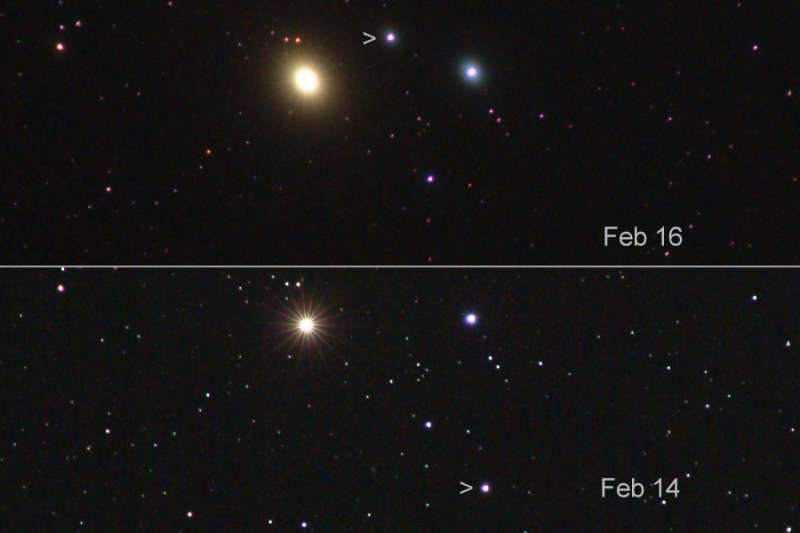
|
Credit & Copyright: Jimmy Westlake
Explanation:
Main belt
asteroid 4 Vesta is at its brightest now.
The small world
is near opposition (opposite the Sun in the sky)
and closest to Earth.
But even at its brightest,
Vesta
is just too faint to spot with the naked-eye.
Still, over the next few days it will be relatively easy to
find in the constellation Leo, sharing a typical binocular field of
view with bright star
Gamma Leonis
(aka Algieba).
In fact on February 16
Vesta
passed between Gamma Leonis and close neighbor on the sky 40 Leonis.
Gamma Leonis is the brightest star in these two panels, while
the second brightest star, 40 Leonis, is directy to its right.
As marked, Vesta is the third brightest "star" in the field.
Vesta shifts position between the two panels from well below 40 Leonis
on Feb. 14 to near the top of the frame from Feb. 16, shooting the gap
between the close Gamma/40 Leonis pair.
Of course, premier close-up views of the asteroid will be possible
after the ion-powered Dawn
spacecraft arrives at Vesta in August of 2011.
|
January February March April May June July August September October November December |
| |||||||||||||||||||||||||||||||||||||||||
NASA Web Site Statements, Warnings, and Disclaimers
NASA Official: Jay Norris. Specific rights apply.
A service of: LHEA at NASA / GSFC
& Michigan Tech. U.
Based on Astronomy Picture
Of the Day
Publications with keywords: Vesta - asteroid
Publications with words: Vesta - asteroid
See also:
